Clustering blue chanterelles, or black chanterelles, are a delicious edible mushroom you should consider yourself lucky to find. They taste like chanterelle crossed with a black trumpet and have a rich, meaty flavor.
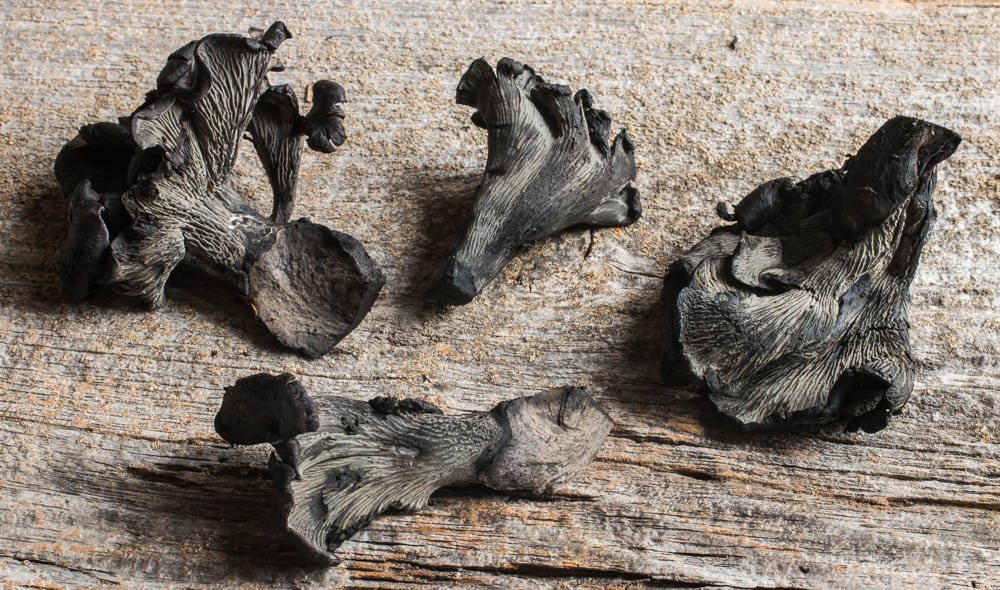
Update(s)
The name of this mushroom could be changing to Polyozellus atrolazulinus or Polyozellus marymargaretae. It appears they're part of a species complex putting them in the Thelephorales, along with Sarcodon, Hydnellum and Thelephoraso. Another common name for the group is leathery earthfans.
Threatened from habitat loss
This species is at risk from habitat loss. Even though it's occasionally sold commercially it's probably best to sample them in small amounts.
Original Post
I remember a time when I knew the word chanterelle, a type of golden mushroom French chef's loved, and, that was it. Even after I cooked my first ones in a restaurant, I still only knew the golds. I knew nothing.
I don't think I could've ever imagined how complex and beautiful Nature's chanterelle palette actually is. The variety of chanterelles and their cousins alone, in our increasingly complex and now genetically vast world of mushrooms, is stunning.
Years later I know a number of varieties of golden chanterelles, as well as purple/pig ear chanterelles, multiple varieties of red cinabar chanterelles, black trumpet mushrooms and a black chanterelle, white chanterelles, rainbow chanterelles, pink persicinus chanterelles, and yes, blue chanterelles.
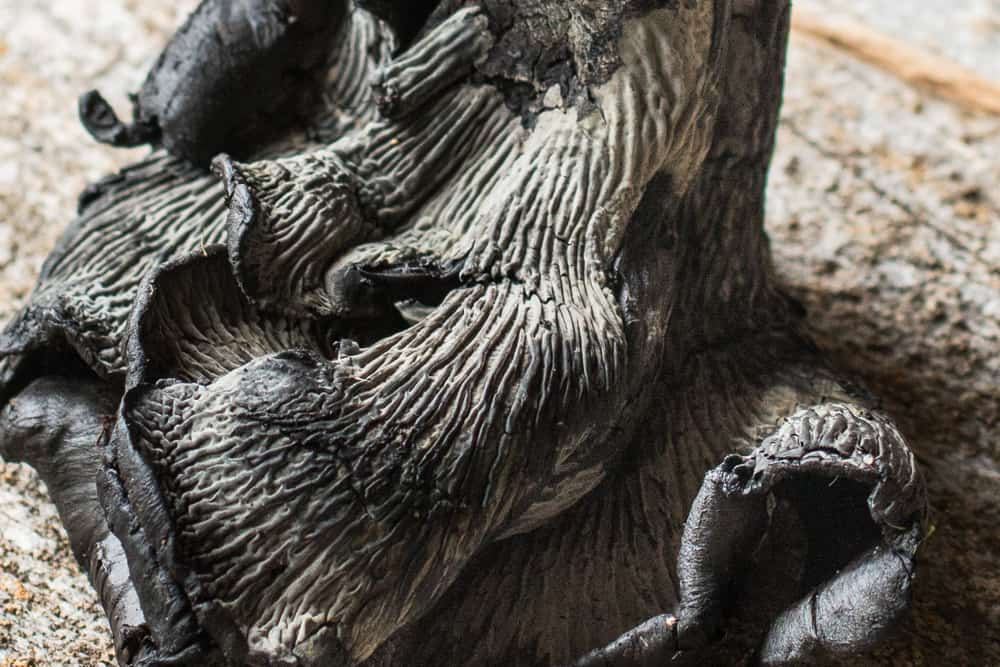
Polyozellus (formerly polyzygus) multiplex or clustering blue chanterelles (they're more blue-black technically) have been on my list of wild mushrooms to eat for a long time.
For a short period in the fall, around October, you might be able to get some from the Pacific Northwest.
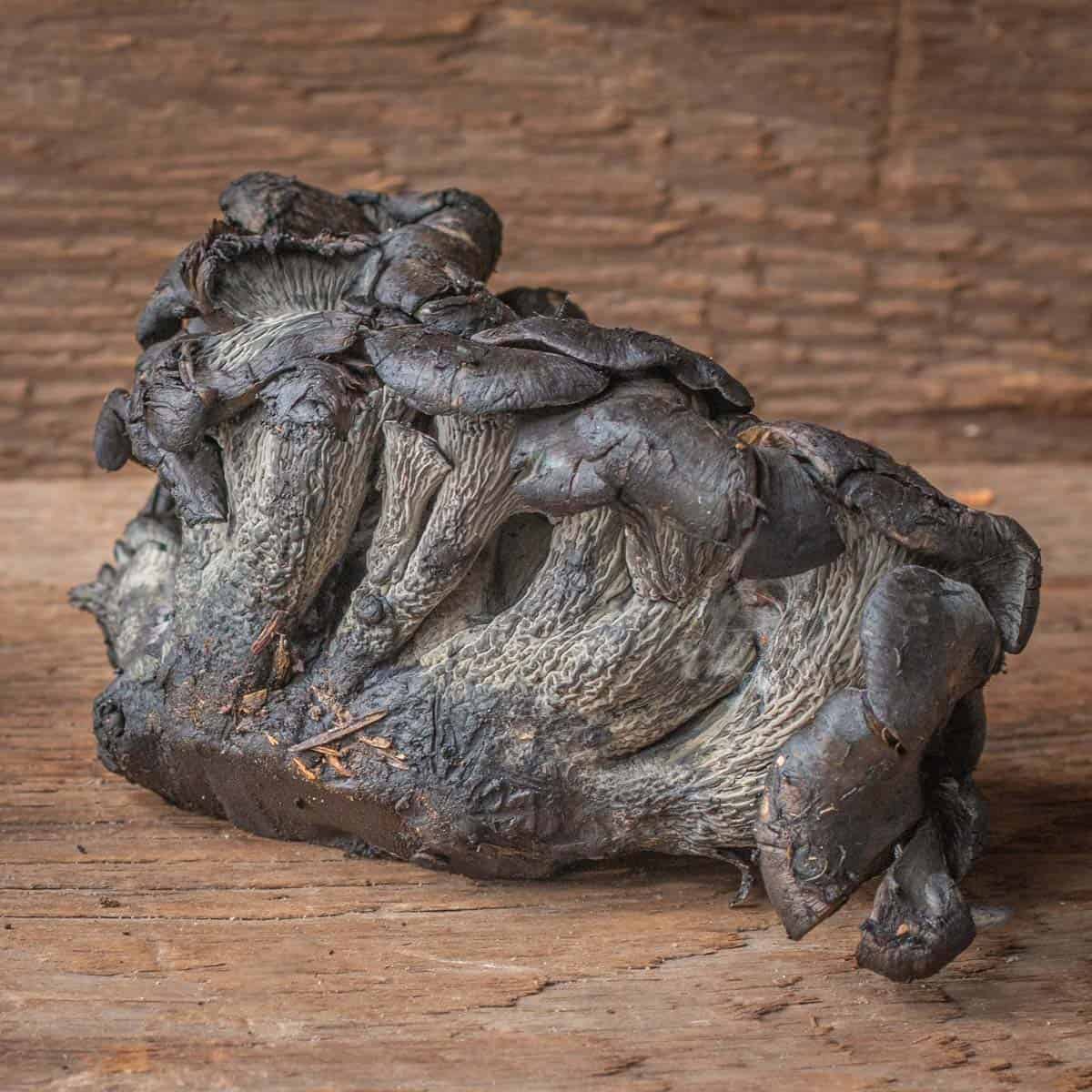
This fall a big box showed up for me, and I was like a kid on Christmas morning. Having habitually read field guide entries on them for years I knew slightly what to expect, and, having picked my first Gomphus this year, I expected the Polyzellus to be similar, as both are chanterelle cousins that specifically grow in a clustered form.
I opened the box, and held up what looked like a cluster of black hen of the woods, well, more like if a hen and a black trumpet had a baby, and that baby smelled like no other mushroom I've ever had.
With the gomphus / pig ears I picked, I could smell a little echo of the fruity-apricot chanterelle scent, but it was very faint, even on the really fresh ones I ate this year. I assumed these would be similar.
Woodsmoke Aroma
With Polyozellus multiplex, the chanterelle family scent is not there, in any way, shape, or form. Instead, the blue chants smell faintly of earth and mushroom, but the most noticeable is a strong, but subtle scent, that, after doing a few blind smell tests with people, I would have to describe as woodsmoke.
The smokiness is more than a cute trick too, it will scent food they're cooked in, especially grains and starches. See my wild rice bake below for an example of that.
Color
I mentioned these were like if a hen of the woods and black trumpet mushrooms had a baby. The shape resembles hen of the woods a bit, but their color and more specifically how that color translates to other culinary ingredients, is pretty interesting.
Just like black trumpets, the blue chants will stain and color other foods they're cooked with. They'll stain the inside of your fridge too, and whatever else is in it, if you leave them uncovered.
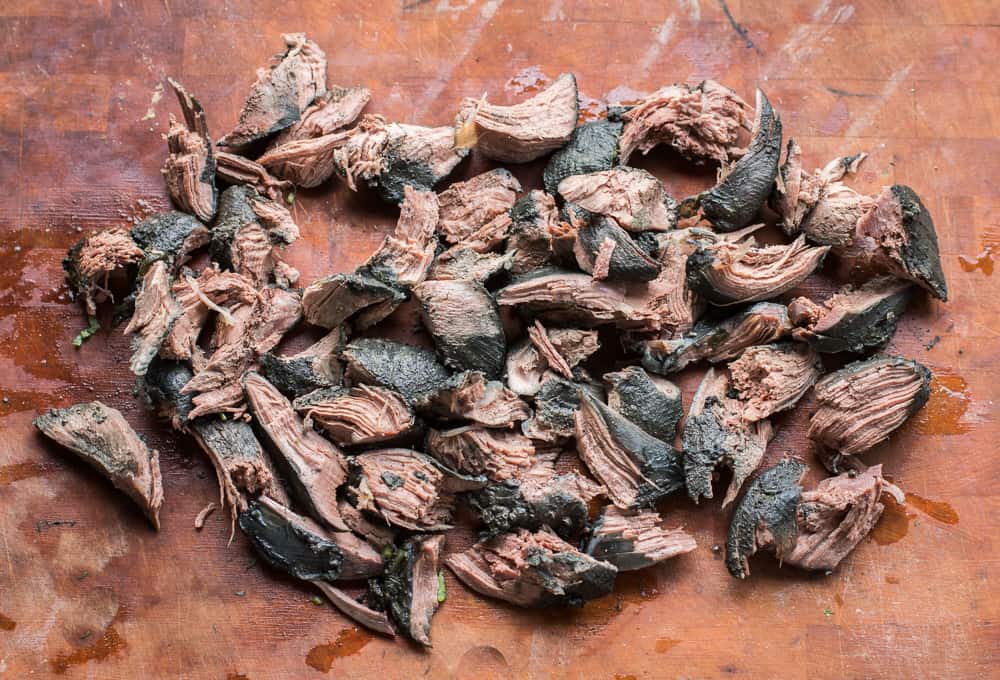
The Meatiest Texture
The texture is really special too. I can't speak to older or younger specimens as mine were picked for me (this time), but every blue chant I had was, soft, succulent, and I'm not just saying that because they were young, and in good condition.
These have a tenderness to them, not a sort of slippery mucilaginous one like a boiled honey mushroom, but a soft suppleness, before and after cooking. I've never really tasted anything like it, but a decent parallel is how very young hen or chicken of the woods are far more tender in the very young stages before they create leaves/fronds.
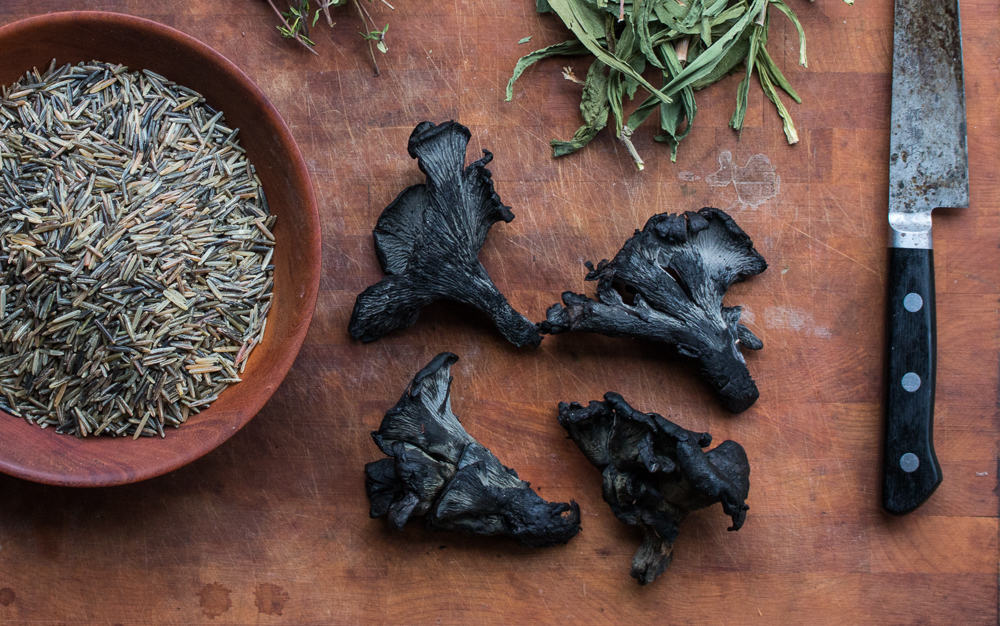
Cooking
Cleaning was a breeze with these, a pine needle there, a leaf there, it was easy street, just like a lot of mushrooms from the Pacific North West. For trimming and eating, I usually peeled or cut the clusters into little hunks for cooking, making sure to have large pieces as opposed to smaller.
Roasting whole, cleaned clusters whole was good too, like I do with hen of the woods, should you be lucky enough to find whole clean clusters. Interestingly enough, they're soft texture made very good jerky, even better than hen of the woods in my opinion, which is by far the most popular species for jerky preparation.
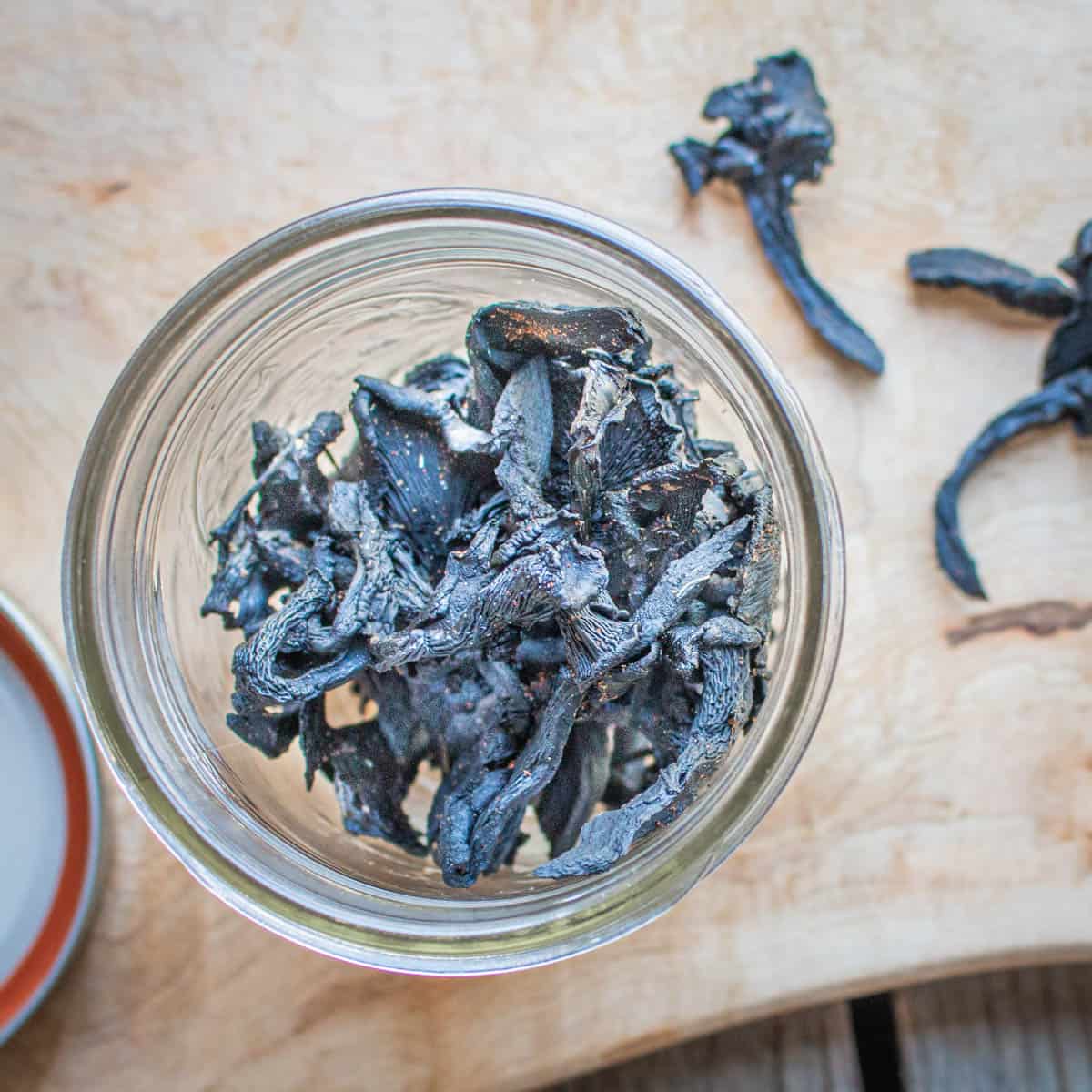

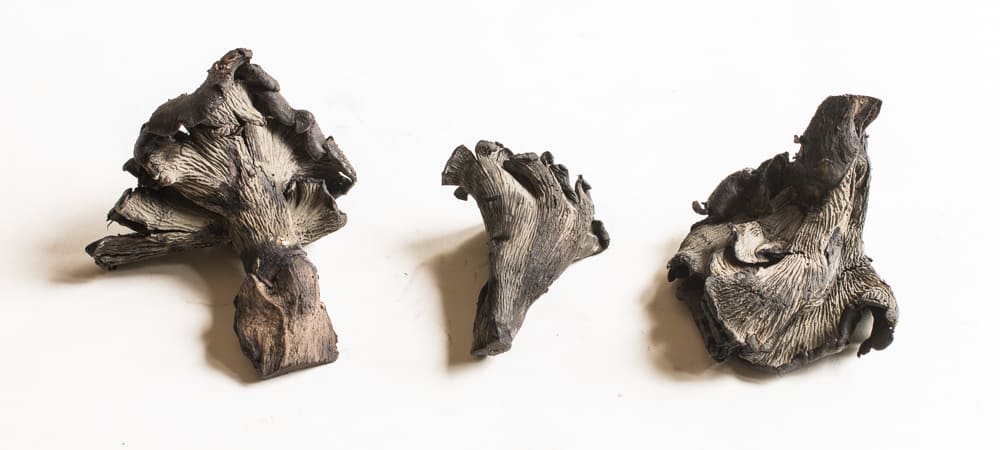
Caroline
Hello, Alan,
This is an awesome website! I have to read up on lots of mushrooms for my work, and yours is among the most useful ones I've found--and possibly the most fun to read. While I haven't yet had the opportunity to use one of your recipes, I like imagining the possibilities.
Alan Bergo
Thanks Caroline. The website is undergoing a big facelift at the moment and it's going to take some time to get everything polished and buttoned up, so that makes my day. Many years of work and research have gone into it.
Jenny
It's my understanding this species is rare, is ectomycorrhizal, and mostly hangs out in old-growth forests. Please consider including a disclaimer to discourage foraging by your fans, as such biodiversity greatly needs preserving in today's world.
Alan Bergo
I appreciate your concern Jenny, but Polyozellus is actually sold in large amounts commercially during it's season. People hunting them is fine, and harvesting a mushroom does no more harm to the mycelium than plucking an apple from a tree.
Jenny
Thank you for your thoughtful reply. I'm quoting Tim Baroni, who says it should probably be avoided as an edible due to its conservation status in the Northeast, but maybe it's a different situation in the PNW. Regardless, despite mycelium being underground we don't really know the consequences of overharvesting to mushrooms, especially in terms of genetic diversity and resilience to a changing climate.
David Lorah
This is the flowering part of the fungus. The mycelium underneath the fruiting body is eating some sort of decaying matter. At some point it will decay whatever is there and no longer have the proper substrate to live with. Removing the fruiting body does nothing to hinder this process.
Jennifer Bower
I am aware that the fruiting body can be harvested without harming the mycelium. As you can see in my additional comment, my note is about maintaining fungal diversity for endangered or threatened fungi. It’s possible that overharvesting decreases the amount of genetic recombination through decreased spore dispersal.
Arena Heidi
Have you thought about trying to spread some mushrooms/spores in a suitable habitat in your area? I have been spreading wild mushrooms for a long time, and have had good success with many varieties. It works best if you spread them in a habitat similar to the one where they were gathered. Spreading edible mycorrhizal mushrooms is a win-win for humans, trees, and the environment.
Alan Bergo
Of course! I've been trying with blewits for years. I need to be more consistent.
Arena Heidi
I meant trying to spread the blue chanterelle in your area. I love the idea of establishing a mycorrhizal mushroom that one has never found in their area before. I would happily exchange old funky mushrooms with people for that purpose.
Blewits spread very easily for me. But then they never last for more than 2 or 3 years in their new location, so it was harder to keep up with them. I let them slide and now I haven't had any in awhile. Mycorrhizal mushrooms generally take much longer to see results, but eventually they may establish themselves into reliably fruiting new patches!
Fred Terracina
I have seen blue chanterelles in NYS. I think both Peck and Atkinson also reported them as did a
A. Smith. Fred
Alan Bergo
That’s interesting. I’ve heard reports of them north of Minnesota in Ontario, but mostly I see them being harvested in the PNW.